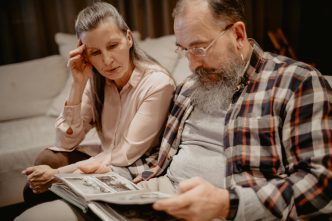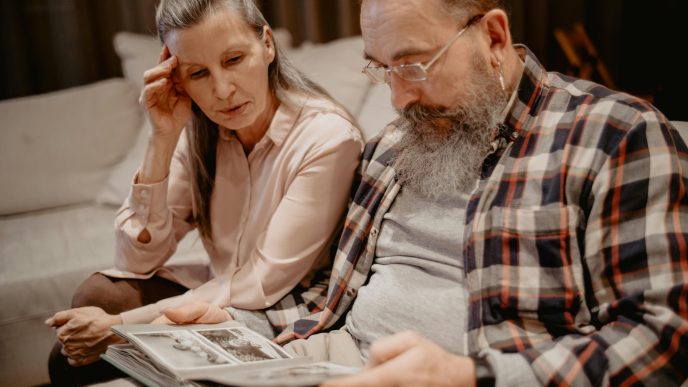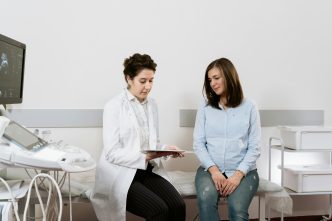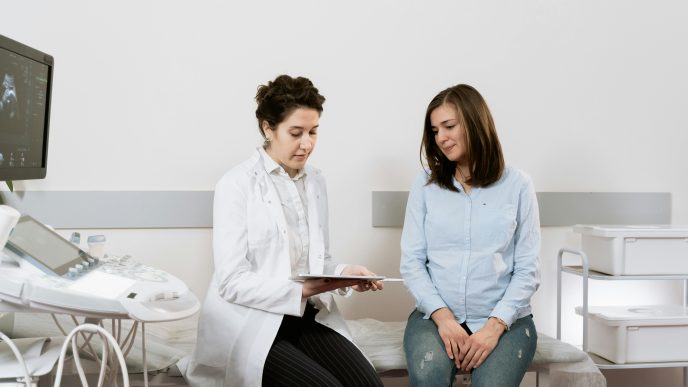Polymyalgia rheumatica (PMR) behaves like an immune-driven disease. The body’s defense system turns “too hot” and inflames tissues around the shoulders and hips, causing aching and morning stiffness.
We know this because (1) immune chemicals — especially interleukin-6 (IL-6) — are high in active PMR, (2) strong immune-calming medicines (steroids, and in tougher cases IL-6–blocking drugs) work, (3) PMR shares genetics and biology with giant cell arteritis (GCA), a well-accepted autoimmune vasculitis, and (4) immune “over-activation” from cancer immunotherapy can trigger PMR-like syndromes.
There’s no single “PMR antibody,” so many experts call PMR an immune-mediated inflammatory disease — autoimmune in behavior, even if not defined by one autoantibody.
What “autoimmune” means here
In autoimmune conditions, your immune system mistakenly targets your own tissues, causing swelling and pain. PMR mainly targets the soft tissues around joints — bursae and tendon sheaths — near the shoulders and hips. You feel deep aching and stiffness, especially in the morning. Doctors see signs of whole-body inflammation on blood tests (ESR/CRP).
According to PubMed, a precise PMR-only antibody hasn’t been found, but immune cells and signals clearly drive the disease. That’s why most specialists describe PMR as immune-mediated (autoimmune-like) rather than “just wear-and-tear.”
The scientific case that PMR is immune-driven
1) IL-6 (a key immune signal) is high — and blocking it helps
- Studies show IL-6 levels rise when PMR is active and tend to track with ESR/CRP. Steroids quickly lower IL-6 along with symptoms.
- Drugs that block IL-6 help in difficult PMR and GCA. In 2023, the FDA approved sarilumab (an IL-6 receptor blocker) for adults with PMR who can’t taper steroids or didn’t respond well. That only happens when the immune pathway is central to the disease.
2) The immune system is visibly “on” in the right places
Biopsies and imaging show inflammation in bursae/tendon sheaths near the shoulders/hips; immune cells like macrophages and T cells are involved. Ultrasound often shows bilateral (both-sided) bursitis that supports PMR when the story fits.
3) PMR and GCA are “sister” diseases
About half of people with GCA have PMR-type aches, and a portion of people with PMR develop GCA. GCA is widely accepted as an autoimmune vasculitis; the two share biology (including IL-6) and some genetic signals—so PMR sits on the same immune spectrum.
4) Genetics point to immune pathways
Research links PMR/GCA to HLA (immune) genes in many populations (findings are strongest and most consistent in GCA; PMR varies by ancestry). Newer large studies also highlight immune-inflammation genes (e.g., IL1R1). Genetics don’t cause PMR by themselves, but they prime the immune system.
5) Breaking immune “brakes” can trigger PMR-like illness
Cancer drugs called immune checkpoint inhibitors sometimes cause PMR-like syndromes — real-world proof that when the immune system is pushed, PMR-type inflammation can appear.
“Autoimmune” vs “autoinflammatory”: where does PMR sit?
Think of immune problems on a spectrum:
- Autoinflammatory: Mostly innate (first-responder) immune system misfires.
- Autoimmune: Mostly adaptive immune system (B/T cells) mis-targeting self.
PMR shows both: strong innate inflammation (IL-6, acute-phase response) and signs of adaptive involvement (T-cell patterns), especially in the overlap with GCA. That’s why many reviews call PMR an immune-mediated inflammatory disease — autoimmune in behavior, but with some autoinflammatory flavor and no single autoantibody.
“If it’s autoimmune, where’s the antibody?”
Great question. Unlike rheumatoid arthritis (anti-CCP) or lupus (ANA), no PMR-specific antibody has held up across studies. A few teams reported antibodies to ferritin peptides in some PMR/GCA patients, but results are inconsistent and not used in routine care. So we diagnose PMR by pattern (symptoms + labs ± imaging) and by excluding look-alikes — not by a single blood test.
Why PMR happens after age 50 (the role of aging immunity)
PMR is rare before 50. As we age, the immune system changes (immunosenescence): balance between “go” and “stop” signals shifts, and some people develop runaway inflammation in certain tissues. Genetics and possible environmental sparks can add to that risk.
What this means for treatment
- First-line: Glucocorticoids (steroids) calm the immune system and usually bring relief within days to a couple of weeks once the dose is right. Then we taper slowly to avoid relapse and limit side effects.
- Steroid-sparing: Methotrexate helps some people reduce steroid exposure. For patients who can’t taper or relapse, IL-6 inhibitors (e.g., sarilumab) are now an evidence-based option under specialist care.
- Safety: Because immune-calming medicines can affect bones, blood sugar, blood pressure, and infection risk, plans include bone protection, vaccine checkups, and regular monitoring.
Common myths and quick answers
- “PMR is just wear-and-tear.”
No. It’s inflammatory and immune-mediated; that’s why immune-targeting treatments work. - “If my ESR/CRP are normal, it can’t be PMR.”
Usually they’re high, but a minority have normal values—your whole clinical picture still matters. - “Exercise makes PMR worse — rest until the pain is gone.”
Gentle movement typically helps stiffness; your team can tailor a plan as inflammation calms. (This supports function; it doesn’t “cause” or “cure” autoimmunity.)
When to act fast (because PMR sits next to GCA)
If you have PMR-type pain and develop new headache (temples), scalp tenderness, jaw pain when chewing, or any vision change, get same-day care to check for GCA. Doctors often start treatment immediately to protect sight, then confirm with tests.
Bottom line
PMR looks and behaves like an autoimmune/immune-mediated disease:
- Immune signals (especially IL-6) are high in active disease.
- Immune-calming therapies (steroids; IL-6 inhibitors when needed) work.
- Biology and genetics overlap with GCA, a classic autoimmune vasculitis.
- Immune over-activation (e.g., checkpoint inhibitors) can produce PMR-like illness.
That’s a powerful, multi-angle case that the immune system is the driver —explaining both why PMR happens and why current treatments make sense.










Having had sepsis four times this year and once in 2019, I have developed what my GP believes to be PMR. Do you have any research which connects the two ?
No link, PMR just happens. Have you had tests for all the other diseases when your SED is high?
I had and was negative for all the others.
I am retired from the medical field.
I had a fall 6 months ago which resulted in cellulitis developing within 10 hours. I was on the point of the infection turning into sepsis after 4 weeks of antibiotics. eye sight deteriorated and i would just tumble and fall for no reason. B12 injections followed then horrendous pains in shoulders and pelvic region began. Dr done loads more blood tests and a short dose of steroids which improved symptoms. unfortunately as soon as i stopped taking the steroids all symptoms returned. Dr said I have polymyalgia rheumatica and I am on a 12/18 month reducing steroids treatment. I was diagnosed with fibromyalgia a few years ago which a good diet, meditation and other holistic treatments relieved. Full circle im in so much pain and weight is gaining all because a hotel turned off the floodlight to the entrance and i tripped over a planter in the pitch black darkness which should have been lit up 😩 any suggestions I can’t take nsaids due to allergic reactions.
i was diagnosed with pmr i was on prednizone in decreasing doses from 10mg daily to 0 mg daily over 2 and 1/2 years i am still no better what do you think is going on iam a type2 diabetic i have psorisis and ulcertive colitis
It’s pesticides accumulating in the lungs and making them swell up which then forces the linkages (bones) moving from the shoulders down the arms, fingers to get out of alignment which then causes much pain when arm movement occurs.
You need to get carbon filter type filters in the house and close windows. Also detoxing the pesticides out through sweating or going in salt water (sea or floatation tanks)
I was diagnosed with PMR before Covid. I took hydroxychloroquine when I caught COVID and my pmr symptoms got better. I discovered some research on the nih site that showed a large percentage of PMR patients improved taking hydroxychloroquine. My doctor agreed to let me try. I have been in total remission and pain free for 2 years. ( never took the steroids)
I had the first time lasting a couple of years, I flew to my birth country high in the Andes ,I knew if I stayed months my body would make more red cells ,had weekly inyection of B12.
In the USA I refused steroids because is hard to stop them, my pain was unbearable and cant take narcotics.
My PMR was gone in 2 months, red cell up,white lower.
8 years later I had again PMR, milder ,manageable, so I get it for months,is gone.
My SED remains high, but not like the first time.
My blood work every 3 months includes sed.
How do you attribute going home to the Andes in helping your Pmr? I heard the B-12 shots but any other regiment of meds being otc, holistic or dr. Prescribed?
I had a fall 6 months ago which resulted in cellulitis developing within 10 hours. I was on the point of the infection turning into sepsis after 4 weeks of antibiotics. eye sight deteriorated and i would just tumble and fall for no reason. B12 injections followed then horrendous pains in shoulders and pelvic region began. Dr done loads more blood tests and a short dose of steroids which improved symptoms. unfortunately as soon as i stopped taking the steroids all symptoms returned. Dr said I have polymyalgia rheumatica and I am on a 12/18 month reducing steroids treatment. I was diagnosed with fibromyalgia a few years ago which a good diet, meditation and other holistic treatments relieved. Full circle im in so much pain and weight is gaining all because a hotel turned off the floodlight to the entrance and i tripped over a planter in the pitch black darkness which should have been lit up 😩 any suggestions I can’t take nsaids due to allergic reactions.